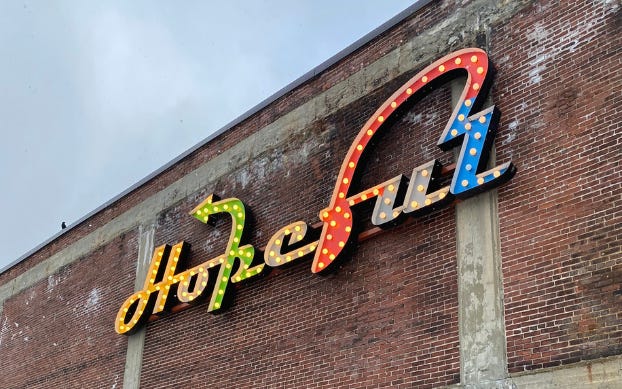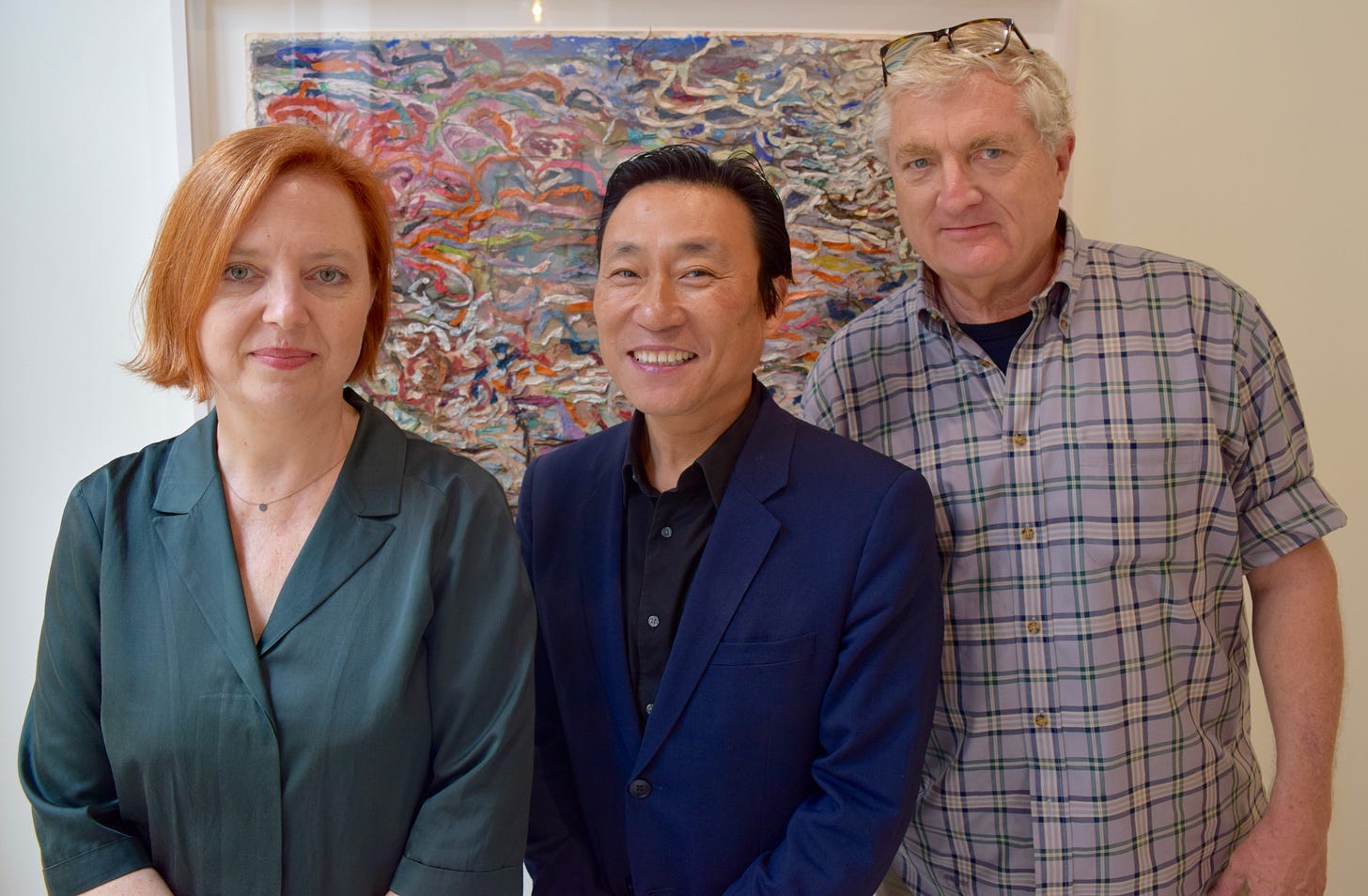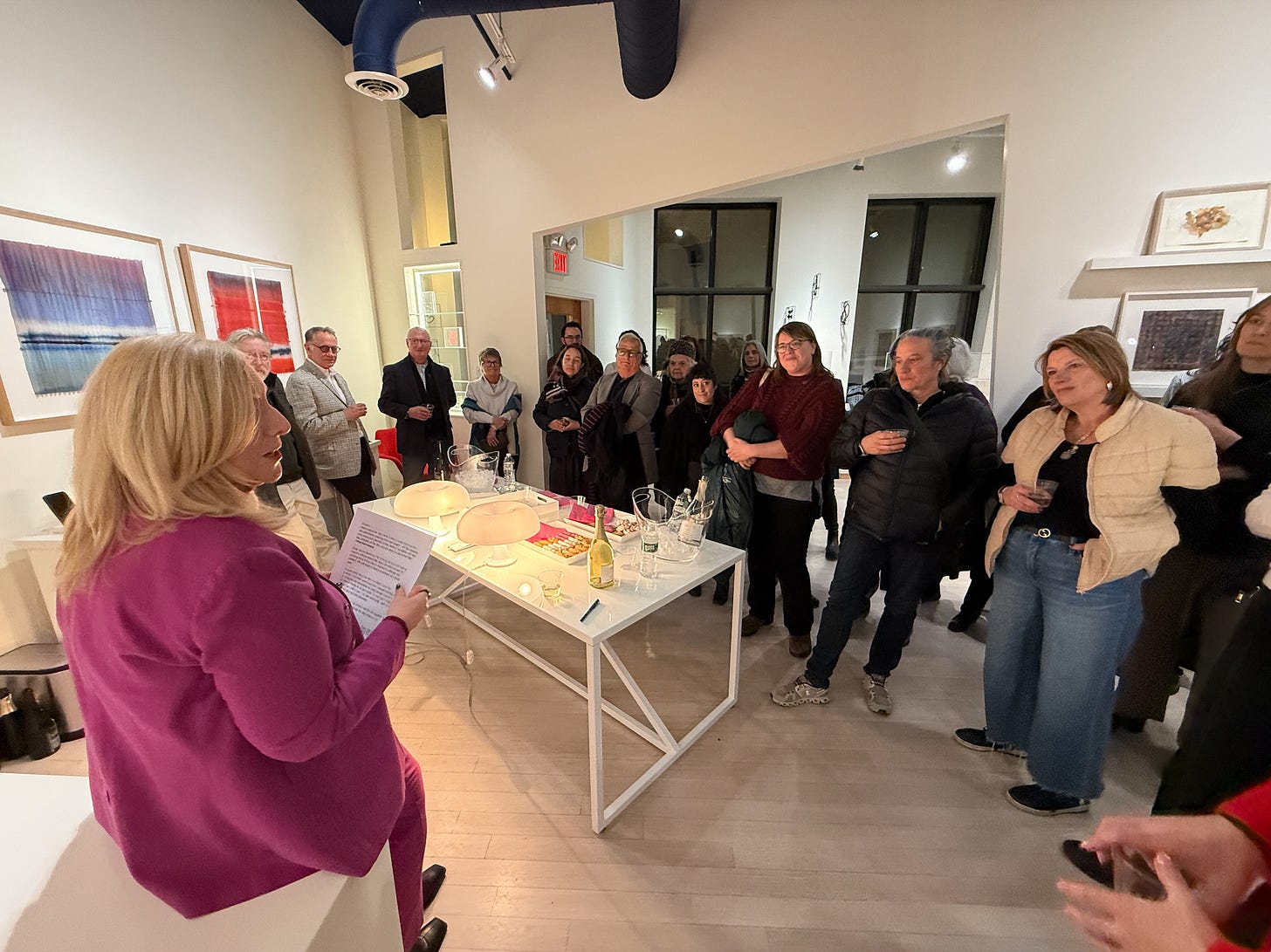
Hello lovely Rabkin community,
We are at a crossroads, as a country, a culture, and a planet. As I tap out that sentence and look at it on my screen, I am taken aback by how obvious and un-hyperbolic a statement that is. At a time that feels unlike any other, many of us are asking: Who is best equipped to help us make sense of things?
With respect for all of the policy wonks I read on Substack and the indefatigable political reporters doing stand-ups at the White House, I will always make the case for our culture writers. What we see and how we look, these things shape our shared narrative. And this is where arts writers live.
I know this is stating the obvious for the not huge but mighty readership of this newsletter. You know this. I know this. But our friends, colleagues, acquaintances and families may not. So, consider talking up great arts writing or passing it along.
Consider the one-two punch of Robin Givhan and Carolina Miranda in The Washington Post in recent days. Carolina launched a year-long project that will unpack the optics of the Trump presidency, including what she describes as backward-looking architecture and the cartoonish, WWE-esque alternate reality. Robin, meanwhile, gave us a telling read on the official portraits of Melania and President Trump, with Melania as the glossy, unhuggable, boss lady and Trump as a stage-lit, scowling gangster.
Other writers you may wish to bookmark, so to speak, for this moment, are Rebecca Solnit and Coco Fusco. One of Rebecca’s recent columns reminds us that while we forage the internet for pragmatic advice about what to do, good citizenship is also something we carry close and exercise in small, everyday ways, including conversation. As for Coco, inspired by a visit to the Mexican Prints at the Vanguard exhibition at the Metropolitan Museum of Art, she has taken to satire with her new collaboration The Siren, what she calls a sane response to insane times.
Or consider a review by Aruna D’Souza, which explores the work of three women who persevered in art making despite the imprisonment of Japanese Americans during World War II; artist Faith Wilding’s invitation to observe the often unnoticed beauty in nature as form of resistance (as told to Emily Watlington); and a review by Eileen G’Sell of the Else Hagen show in Oslo, paintings grounded in feminist angst and solidarity.
Other writing that has been a balm, simply by being insightful and pleasurable to read of late, includes Jillian Steinhauer’s tribute to Juane Quick-to-See Smith, a review by AX Mina, which asks if art can play a role in healing after a massacre; and a review of a show of Kate Hargrave’s paintings at the Moss Galleries here in Portland by Hrag Vartanian.
All of the writers I’ve mentioned, as you might have guessed, are Rabkin Prize winners, with the exception of AX, who is a member of our board, and Hrag, who is a recent recipient of the Susan C. Larsen Lifetime Achievement Award. If you have not checked out our new website yet, please do, as we’ve updated the bios and links to social media and websites for the Rabkin Prize winners.
And speaking of arts writers and the precarity of the field, you are going to want to give some time to “For Love or Money,” a series of essays by art critics about why they do what they do, led by Lilly Wei and Barbara A. MacAdam for The Brooklyn Rail.

WALTER ROBINSON
In his essay for that recent Rail collection, Walter Robinson wrote that he felt more at home identifying as a critic than as an artist. He was both, in full measure. Robinson, a painter, critic and editor, a redoubtable and punkish voice in the art world for more than 50 years, died on Sunday. He was 74. The cause was liver cancer, according to reports. Robinson was also very dear to our foundation. When we were new and lacked name recognition, Walter accepted our invitation to be a juror. He offered his judgment and imprimatur to the very first round of Rabkin Prizes.
NEW TRAVEL GRANT PROGRAM
We know arts writers often foot the bill for their own travel. We want to help remove financial barriers and enable more writers to experience exhibits and events firsthand in order to produce insightful arts journalism. So, please make note, we are launching a pilot program to offer small travel grants, up to $500 to visual arts writers. We will announce details in our March newsletter and on social media. Keep an eye peeled and please let your arts writing friends know about this.
READING GROUP, ANYONE?
Some of the most grounding conversations I’ve had recently have been in response to the question, “So what are you reading right now?” Would you have interest in a quarterly gathering to share great arts writing, in Portland or nationally via Zoom? No assigned reading. Everyone would simply share what cultural writing they’ve read and why it mattered to them. If there’s interest, we’ll get something cooking (respond to this email to let me know).
FIRE RELIEF IN LOS ANGELES
By now, you have all seen the incredible response to provide relief to the arts ecosystem in Los Angeles, including the J. Paul Getty-led efforts to create a fund with the Center for Cultural Innovation (application deadline is fast approaching: Feb. 18). Please spread the word that this fund, as well as another set up by PEN America, is open to arts writers.

MY FILM IN MAINE, AGAIN
Thank you to everyone who attended our “toast to arts writers” at the Rabkin gallery before the screening of my film about art critics, Out of the Picture, at the Portland Museum of Art. The gallery was full, as was the screening space at the PMA. And meaningful, concrete conversations flowed out of that evening that may have an impact on the arts writing ecosystem in any number of ways. Stay tuned.
In the meantime, for our community in Maine, if you missed the film and are interested in seeing it, you have another opportunity. It will screen at one of the finest theaters in the state, the Maine Film Center, on March 10, as part of Frame by Frame, a collaboration with the Colby College Museum of Art.
HANGING WITH ARTS WRITERS
I also will be taking my film to the Grand Theater in Wausau, Wis., on Feb. 19; the Museum of Contemporary Art in Chicago on Feb. 22; and the Savannah College of Art and Design’s theater, SCADshow, in Atlanta on Feb. 24. If you are an arts writer in central Wisconsin, Chicago or Atlanta and would like to grab a coffee or meet up, ping me by responding to this newsletter.
OTHER THINGS TO NOTE
Here is a rundown of other things we want to put on your radar. The Boston Art Review team is looking for a managing editor; if you are an arts writer of color with less than two years of experience and write critically about music, consider applying for the Yamamoto Arts Writers Fellowship; the Indigo Arts Alliance, part of our community in Maine, is seeking applications for the David C. Driskell Fellowship, which is is open to black and brown artists of any discipline; the Gordon Parks Foundation has announced its 2025 art and writing fellowships; AICA has announced its 2025 Art Critic Fellowship cohort; Hilton Als’ wonderful distinguished critic lecture for AICA is now online; Sarah Lewis will be in conversation with Nell Irvin Painter at the New York Public Library (and via livestream) on Feb. 19, discussing her new book, The Unseen Truth: When Race Changed Sight in America (Harvard University Press, 2024); Get in the Game, a SFMoMA exhibit about the role of sports in culture, curated by Rabkin Prize winner Seph Rodney with Jennifer Dunlop Fletcher and Katy Siegel, is open for a few more days (before traveling to Crystal Bridges in Arkansas and the Pérez Art Museum in Miami); we want to wish Jupiter Magazine the happiest of one year anniversaries and Lights Out Gallery (which produces a wonderful interview series with artists in Maine) a happy fourth birthday; and, finally, look at what another artist-endowed foundation did to celebrate the work and legacy of their artist!
Thank you for being here and getting all of the way through to these final words. We appreciate you.
Warmly,
Mary Louise Schumacher
Executive Director
The Dorothea and Leo Rabkin Foundation




